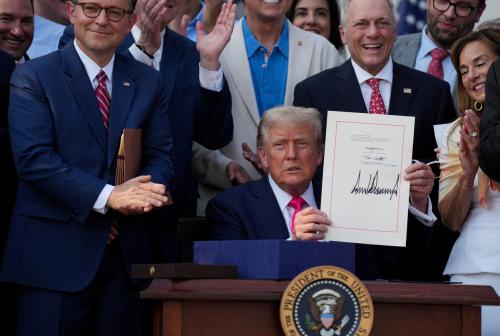Appreciation may hurt a bit today. But it can stem inflation, which will hurt a lot tomorrow.
Galloping inflation poses a big risk to China’s growth and stability. It is time to get all hands on deck. And yet, with its rigid currency policy, China is fighting the inflation battle with one hand tied behind its back.
China’s currency regime is now beginning to look more like political dogma rather than sound policy. The rigid policy threatens to upset the delicate balance between keeping growth strong and inflation at moderate levels.
China’s annual consumer price inflation is entrenched above 5 percent and edging higher. Inflation is now being driven mostly by food prices, which are rising at an annual rate of over 11 percent. Nonfood inflation remains modest at about 3 percent.
However, low nonfood inflation at this point is scant comfort. Food expenditures on average constitute about one-third of total consumption expenditures for Chinese households. This means that food inflation will soon feed into higher overall inflation by influencing wage demands.
What’s more, food price increases hit the poor a lot harder as food expenditures account for a larger share of their total expenditures compared to middle class households. The urban poor face a double whammy. They do not benefit from agricultural price increases; measures to control inflation could affect their employment prospects.
No wonder inflation keeps Chinese policy makers up at night. High inflation can feed into social instability, especially in urban areas where there are already rumblings of discontent at dismal employment prospects and the growing gap between rich and poor. Skyrocketing food prices could tip things over from discontent to outright revolt, which would be harder to bottle up in urban areas with concentrated populations.
The government has responded aggressively to contain inflation by clamping down on growth in monetary aggregates and bank credit. The problem is that tightening credit hurts employment growth by reducing credit flows to small- and medium-sized enterprises, especially those in the private sector. And this is the dynamic part of the economy that generates jobs.
Increasing interest rates would be a better approach to managing credit expansion. Judging by the rush for informal credit at rates of over 20%, private firms seem willing to pay more than the present benchmark rate of 6.3% for credit—if they could get it.
Why doesn’t China’s central bank raise interest rates then? In short, it’s strapped by its policy of tightly managing the yuan’s value relative to the dollar. To keep this value at a desired level, the central bank intervenes in foreign exchange markets to buy dollars and sell yuan. It then mops up that extra yuan through sterilization—selling bonds to banks to get cash back, for which it likely desires a low interest rate.
Equally importantly, with interest rates in the U.S. and other advanced economies at much lower levels, any increase in Chinese rates would pull in more capital looking for higher yield. As it is, China’s strong growth prospects and resurgent trade surplus are pulling in large amounts of foreign capital, adding liquidity to the financial system and fueling inflation and asset bubbles. The central bank wants to avoid this.
In this scenario, a significant currency appreciation would serve the dual objectives of tamping down inflation and helping to shift the balance of growth toward private consumption. A more flexible currency would also give the central bank a freer hand in changing interest rates. A rising yuan would raise the purchasing power of domestic households, first directly through the fall in the price of imported goods and second by giving the central bank room to raise deposit rates, so that households get a better rate of return on their savings.
Yes, there has been some apparent progress on the currency front. Much was made of last June’s announcement by Beijing that it would let the yuan slowly appreciate. Over the past year, the yuan has appreciated by about 5% against the dollar, or about 7% to 8% in inflation-adjusted terms. But if we consider that the dollar has been in broad retreat against other major currencies, the yuan’s trade-weighted multilateral exchange rate—which determines its overall export competitiveness—has been relatively flat. This has kept pressure on the currency to appreciate.
And China’s central bank continues to intervene massively in foreign exchange markets to keep the yuan’s value stable, suggesting the currency is still significantly undervalued. Such intervention boosts the stock of international reserves by about $200 billion each quarter, adding to the government’s headache as this inevitably means more purchases of U.S. treasuries.
Beijing can avoid this headache if it frees up the yuan-dollar rate. Given the direction the dollar is headed, China could easily allow its currency to appreciate more without losing much in terms of its overall export competitiveness.
The mantra that a significant shift in currency policy is in China’s own interest is now truer than ever. Policy makers should realize that the impact of inflation could be much worse for overall growth: Once the inflation genie escapes from its bottle, the sort of drastic policy actions that will be needed to cool things off will hurt the economy a lot more than a few lost jobs in the exporting sector now.
The Brookings Institution is committed to quality, independence, and impact.
We are supported by a diverse array of funders. In line with our values and policies, each Brookings publication represents the sole views of its author(s).



Commentary
Op-edThe Yuan’s Reckoning
June 16, 2011